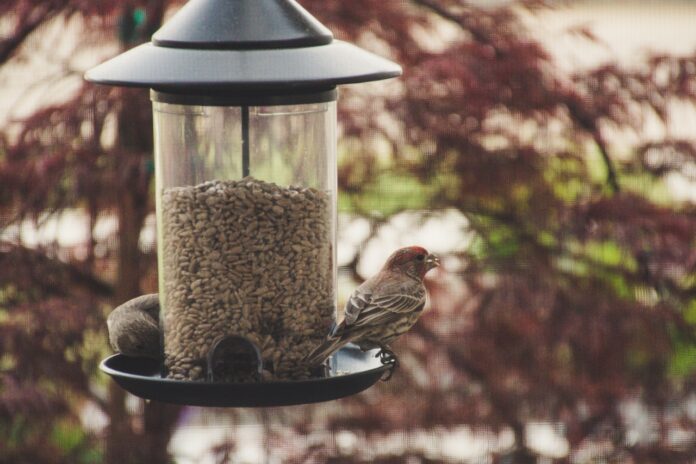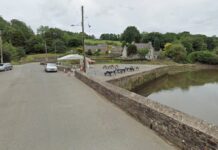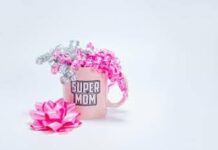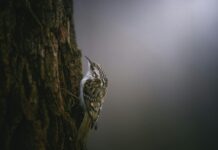
Tips for adding a birdfeeder to your garden or balcony
– With spring in full swing, wildlife expert Tommy Wilde and GTSE give advice and tips on how to make and hang a birdfeeder in your garden or balcony
– 14 dos and don’ts for those looking to encourage more birds to their outdoor space
A healthy garden has an abundance of nature, with birds being a fantastic sign that your garden is thriving. These feathered creatures can bring multiple benefits, helping to pollinate plants, keep pests in check and even tame weeds.
That’s why GTSE have shared their advice on how to create a birdfeeder for your garden, along with top tips from wildlife expert, Tommy Wilde.
Tommy Wilde, wildlife expert at Floofmania and adviser to GTSE.co.uk said
“Some UK regions have more availability of food sources than others, and while bird feeders are almost always a good idea, in some places they’re definitely more needed than others.
In Scotland and in parts of Northern England, the ground is covered by snow for a longer time in winter than it is the case in the south, which means that birds have a harder time finding food, such as insects, fruit and seeds, and in these situations, bird feeders can be particularly helpful.
Scarcity of food sources is not only something we see in cold regions, however. We often see that regions where most of the area is agricultural that food sources become vastly reduced because of pesticides and a limited variety of plants. This can also be seen in urban areas and city centres, where it could make a lot of sense for people to install bird feeders and bird baths on their balconies or courtyards, as well as making nesting materials available.”
Adding a bird feeder is a simple way to attract more birds to your outdoor space, especially in spring when many species migrate back to the UK and mating season commences.
Tommy Wilde, wildlife expert at Floofmania and adviser to GTSE Cable Ties discusses his top tips for encouraging more feathered friends into the garden
- Do use bird-friendly, non-toxic materials for building your bird feeder. Make sure they the materials aren’t chemically treated, that there are no sharp edges, and no risk of the bird getting its feet caught.
- Do pick the right bird feeder design. Consider if a platform feeder, a tube feeder, a suet feeder, or another type of feeder is most suitable in your situation. Also do take the size of the birds you want to feed into consideration.
- Do provide a variety of food types to accommodate different bird species’ requirements. Use different seeds such as sunflower seeds, nyjer seeds, millet, suet, fruit, vegetables, or even meal worms and insects if you can get your hands on them!
- Do take the season into account when feeding birds. In the winter, it’s better for the birds to consume more fat, which is why suet feeders might work better in the cold season.
- Do ensure your homemade feeder is sturdy and stable, so it won’t break or fall down if it gets a little windy, or a bigger-than-expected bird should land!
- Do keep your bird feeder clean and well maintained to avoid the development of bacteria, bad smells, or attracting mice or rats.
- Do provide bird baths and water for the birds to bathe and drink along with the bird feeder.
- Don’t use lead-based paints, toxic glues, or other materials that can make the birds sick if ingested.
- Don’t use food that has gone bad. Moldy or spoiled food is as unhealthy for wild animals as it is for you, and it will allow for unwanted bacteria to grow.
- Don’t create competition among birds. You might want to experiment with this, but putting up too many bird feeders too close to one another might make the birds more aggressive because they’ll attract competition.
- Don’t place your bird feeders close to something precious. When a bird eats, it’ll eventually need to go to the bathroom, so be careful where you place it!
- Don’t place your bird feeders in locations where the birds become easy prey for predators (like your cat).
- Don’t place your bird feeder too close to your windows. This can be difficult if you plan on installing your bird feeder on your balcony, but birds can easy be confused by windows, and might hurt themselves thinking they can fly through them.
- Don’t use meshes and nets as building materials near your feeder. Birds can easily get caught or entangled in these and hurt themselves.
For further information on making your own birdfeeder, follow our handy guide and find much of what you will need at, https://gtse.co.uk/cable-ties.
Help keep news FREE for our readers
Supporting your local community newspaper/online news outlet is crucial now more than ever. If you believe in independent journalism, then consider making a valuable contribution by making a one-time or monthly donation. We operate in rural areas where providing unbiased news can be challenging. Read More About Supporting The West Wales Chronicle























